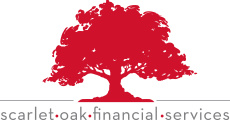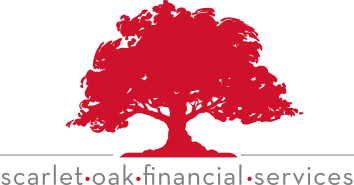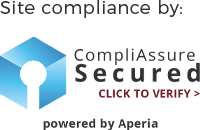Home improvement loans provide homeowners with a valuable financing option to renovate, upgrade, or repair their properties. These loans function similarly to home equity loans or lines of credit, but they are specifically intended for making capital improvements that enhance a home’s livability, functionality, or value. Because home improvement loans are secured by the equity in your home, they often offer lower interest rates compared to unsecured personal loans. However, this also means that failing to meet repayment obligations could put your home at risk of foreclosure.
What is a home improvement loan?
A home improvement loan is similar to a home equity loan/line of credit, except that the loan proceeds are used specifically for making capital improvements to your home. Home improvement loans are secured loans. When you take out a home improvement loan, you use the equity in your home as collateral. You can typically apply for a loan that is equal to, or slightly higher than, the value of the equity in your home. The lender typically receives a mortgage to secure the loan. If you do not make payments on the home improvement loan as agreed, the lender can foreclose. Repayment terms are typically 5 to 20 years.
How do you get a home improvement loan?
Home improvement loans are available at most savings and loan associations, mortgage banks, and commercial banks. Interest rates and terms may vary considerably from lender to lender. Typically, interest rates are adjustable, but some fixed rates are available. Call no less than six lenders to get an idea of what the average rates are in your area.
You will have to complete an application. Typically, the bank will require an appraisal of your home to determine the value of your equity. Most lenders will loan you more than the value of the equity in your home on the assumption that the capital improvements will increase the value of your home.
What if you don’t have any equity?
You may be able to get a home improvement loan even if you do not have any equity in your home. The Federal Housing Authority (FHA), a federally sponsored agency, manages a government insured home improvement loan program. No appraisal is required, and you can borrow under the FHA program whether or not you have any equity. Other benefits of the plan include fixed interest rates, up to 20-year terms and quick funding (7 to 10 days). Ask your lender about FHA Title 1 Home Improvement Loans.
What if you don’t have any credit?
Generally, it is easier to obtain a loan if you have a good credit rating. Different lenders have different requirements. However, under the FHA government insured loan program, you may qualify for a home improvement loan even if you have had bankruptcies, judgments, collection accounts, or charge-offs. Lenders will make these loans to borrowers with poor credit because the government insures repayment.
What are the advantages of home improvement loans?
Interest may be tax deductible
Interest on home improvement loans secured by your primary or secondary residence is generally deductible as long as the total of all mortgage and home improvement loans secured by your primary or secondary residences does not exceed $1 million ($500,000 if you are married and filing a separate return).
What are the tradeoffs of a home improvement loan?
You may not get a return on your investment
Experts estimate that less than 40 percent of the cost of renovations to a home are recovered when the home is sold. Renovations that typically yield the best returns are new kitchens and bathrooms.
Your home is at risk
As with any mortgage loan, you are putting your home at risk since your home serves as collateral for the loan. If for any reason you become unable to make payments on your home improvement loan, the lender can foreclose.
What are the tax implications of a home improvement loan?
Interest payments are deductible
Interest on home improvement loans secured by your primary or secondary residence is generally deductible as long as the total of all mortgage and home improvement loans secured by your primary and secondary residence does not exceed $1 million ($500,000 if you are married filing separately).
Tax basis increased
The cost of capital improvements increases the tax basis of your home and thus reduces any capital gain you may recognize when the home is sold. You should keep all of your receipts and records so that your tax planner can calculate your new basis.
Conclusion
Home improvement loans can be a valuable financial tool for homeowners looking to upgrade their properties, offering access to funds with potentially tax-deductible interest. Whether secured through home equity or a government-backed program like the FHA Title 1 loan, these loans provide a structured way to finance renovations that can enhance a home’s functionality and appeal.
However, borrowers should carefully weigh the trade-offs before taking on this type of debt. While home improvements can increase comfort and enjoyment, they do not always translate into a full return on investment when selling the home. Additionally, because these loans use the home as collateral, failure to make payments can put homeownership at risk.
Before committing to a home improvement loan, it is crucial to explore different lenders, compare interest rates, and ensure the renovations align with long-term financial goals. Proper planning and budgeting can help maximize the benefits while minimizing the risks, allowing homeowners to make improvements without jeopardizing their financial security.
Scarlet Oak Financial Services can be reached at 800.871.1219 or contact us here. Click here to sign up for our weekly newsletter with the latest economic news.
Source:
Broadridge Investor Communication Solutions, Inc. prepared this material for use by Scarlet Oak Financial Services.
Broadridge Investor Communication Solutions, Inc. does not provide investment, tax, legal, or retirement advice or recommendations. The information presented here is not specific to any individual’s personal circumstances. To the extent that this material concerns tax matters, it is not intended or written to be used, and cannot be used, by a taxpayer for the purpose of avoiding penalties that may be imposed by law. Each taxpayer should seek independent advice from a tax professional based on individual circumstances. Scarlet Oak Financial Services provide these materials for general information and educational purposes based upon publicly available information from sources believed to be reliable — we cannot assure the accuracy or completeness of these materials. The information in these materials may change at any time and without notice.



